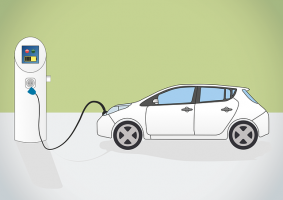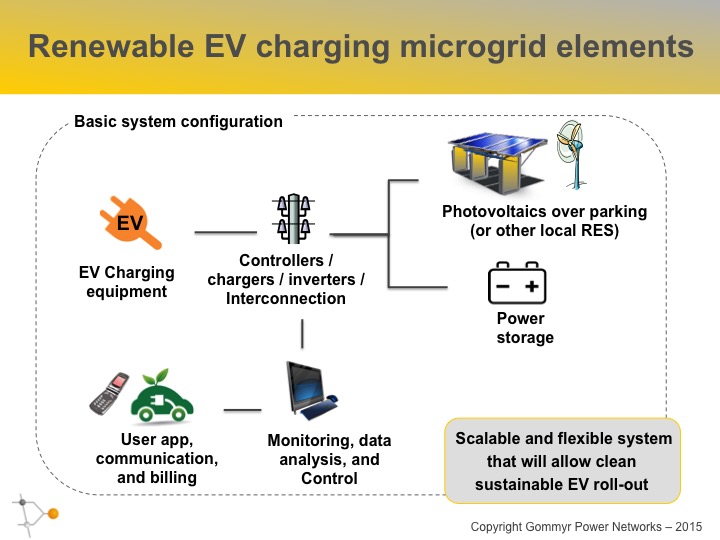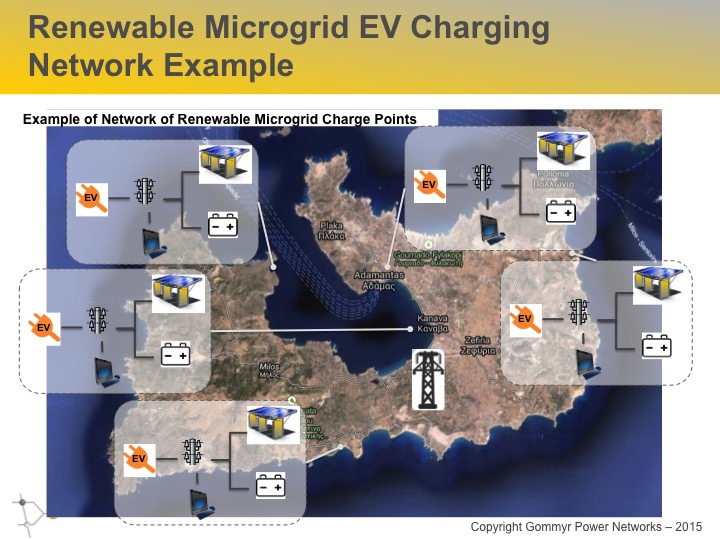
Renewable microgrid charging networks will provide clean power for…
Electric vehicles are gaining traction in markets around the world. Most car manufacturers now offer electric vehicles and the charging infrastructure is rapidly being constructed and installed. As has been discussed in a previous article, electric vehicles and the broader trend of electrification of transport only makes sense in areas where the power sector has been de-carbonized. For regions that rely heavily on coal or diesel generation, electric vehicles powered from grid supplied electricity may even increase carbon emissions and other pollution relative to conventional internal combustion cars. Unfortunately, however, there seems to be little relationship between electric vehicle adoption and the availability of clean power for charging. This is worrying, as many EV owners have invested a substantial premium relative to conventional internal combustion cars primarily due to the environmental benefits of EVs. If are limited or uncertain environmental benefits, the EV market will eventually lose credibility and adoption will slow, just at the point where momentum is building.
Indeed, even in regions with significant renewable resource, the actual marginal source of the power used to charge an individual EV cannot typically be identified. However, unless EV owners are charging their vehicles only during midday in regions with significant photovoltaics (such as California or Spain) or only during windy periods in regions with a large proportion of wind generation (such as northern Germany or Denmark), it is likely that a large proportion of the power used for EVs will be from carbon-emitting conventional sources. The best way to guarantee that your EV is powered by renewable energy is to have localized renewable power. The best option for having localized renewable power for EV charging is a renewable microgrid charging network, based on stand-alone microgrids. These microgrids should include renewable generation (typically photovoltaic power or most suitable local renewable generation type), energy storage (to allow for reliable charging and even fast charging), the charging infrastructure, and the IT and control (to optimize the energy use and battery lifetime as well as interact and communicate with user and operators to ensure good user experience).

An example of a layout for a network of renewable microgrid EV charge points is shown below:

The advantages of a network of renewable microgrid EV charging stations are numerous. Firstly it ensures that the environmental and sustainability benefits of EVs are captured by ensuring that EVs are powered only with renewable power. Next these charge points can be cost competitive with the fuel costs for internal combustion vehicles and relative to power based on diesel generation (subject to the specific local renewable resources, driving habits and fuel costs). Furthermore, such a network is scalable allowing additional charge points to be deployed in line with the local adoption of EVs. It avoids the strain that EV charging, and especially fast-charging, can have on local grid infrastructure. This avoids potential power quality or reliability issues and the requirement for grid investment to accommodate EV charging. This is especially important for regions with poor grid infrastructure or lacking the funds for grid investment and upgrade. Lastly, renewable EV charging microgrids will be purpose built – this allows them to be located where they will be most useful from a network perspective as well as allowing for targeted data-collection and analytics. This data and insight will help identify the factors impacting EV use and EV charging for future optimization of the microgrid network and to provide more value to EV owners and drivers.
It is critical to capture the potential environmental benefits of EVs by ensuring they are charged with power from low-carbon renewable sources. Networks of renewable microgrid charging stations are an extremely compelling option for locations with good renewable resource and either carbon intensive power supply or poor grid infrastructure. This will be a huge growth opportunity for utilities or companies that target this space with the potential to grow significantly as EV adoption takes off.